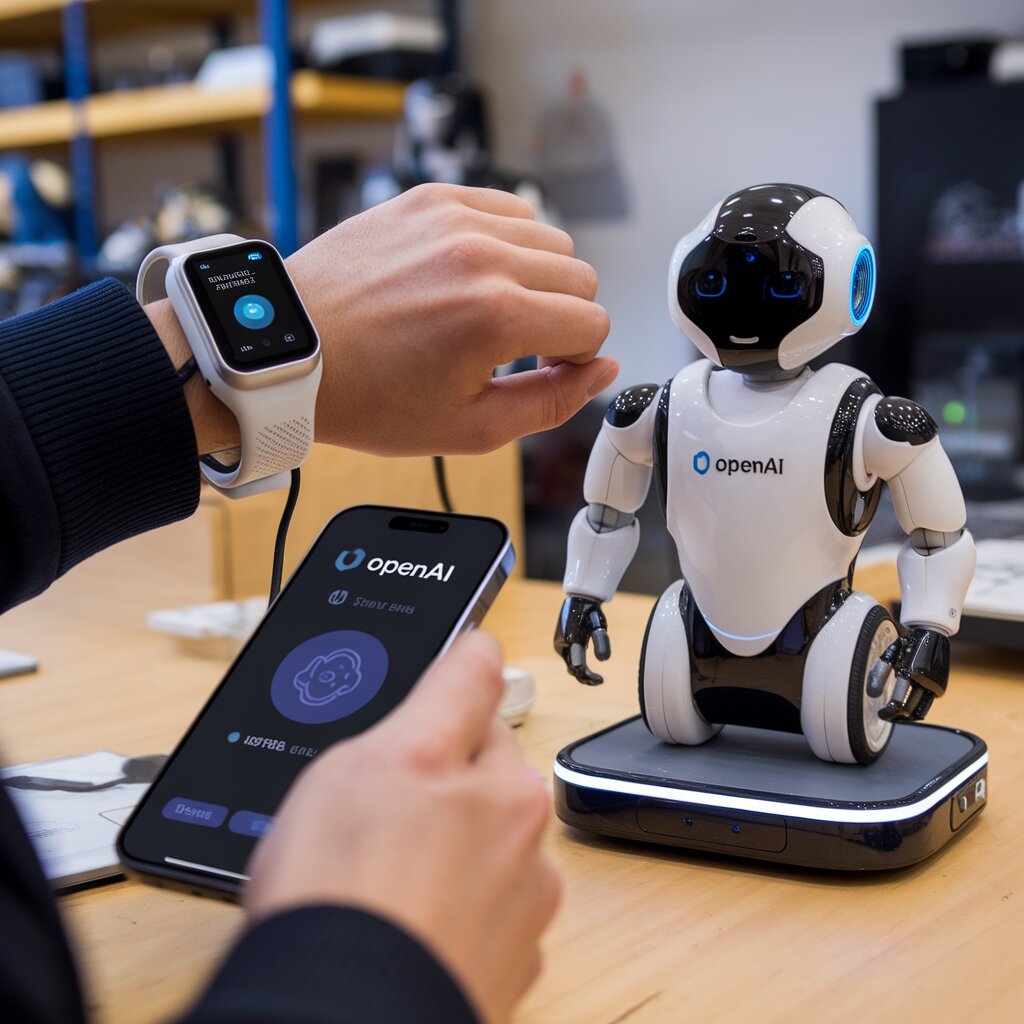In an intriguing development, OpenAI, renowned for its groundbreaking work in artificial intelligence, is exploring the possibility of expanding its reach into the wearables and robotics sectors. This revelation comes on the heels of a trademark application submitted by OpenAI to the U.S. Patent and Trademark Office on January 31, as first reported by TechCrunch.
The application catalogs an extensive array of potential offerings, hinting at OpenAI’s ambitions to move beyond its traditional domains of cloud computing, machine learning, and software-as-a-service (SaaS). Nestled within these expected categories, however, is a surprising twist: a significant array of hardware products.
These include a range of wearable technology and gadgets, such as earphones, headphones, sunglasses, smart watches, and even smart jewelry. The list extends further into cutting-edge areas with wearable computers, cameras, digital media streaming devices, and advanced virtual and augmented reality headsets, goggles, controllers, and remotes.
Wearables seem like a natural progression for OpenAI’s high-functioning AI systems, which excel in data synthesis and user interaction. With the potential to transform expansive data collections into comprehensible insights, large language models (LLMs) like those developed by OpenAI have already begun to power various AI wellness wearables. For instance, the Whoop band’s integration of an OpenAI-powered coach chatbot exemplifies how AI can enhance user understanding of health and lifestyle data.
In the realm of smart sunglasses and AR/VR devices, OpenAI could further capitalize on AI-infused products reminiscent of Meta’s Ray-Ban AI or the Quest 3 headset. These devices serve not only as augmented reality platforms but also as interactive AI companions capable of executing real-time tasks—indicative of a future where smart eyewear can transcribe and translate audio on the fly.
Beyond wearables, OpenAI’s foray into robotics also garners attention. The trademark mentions “user-programmable humanoid robots” intended for assistance and entertainment—echoing OpenAI’s recent job listings in its robotics division. Led by Caitlin Kalinowski, who took up the mantle in November, the team’s hiring spree underscores a burgeoning focus on mechanical design and sensory engineering.
Although there was a recent parting of ways with Figure AI, a significant partner in robotic development, OpenAI appears poised to develop its own robotic solutions. This pivot to independent robot development reflects a strategic interest in innovating beyond virtual AI applications.
To date, OpenAI has expanded its ChatGPT suite into a diverse range of applications, extending its tools to educational, governmental, and enterprise sectors. The leap into hardware, while ambitious, aligns with its overarching growth trajectory. Yet, as many corporate explorations end in unrealized projects, it’s important to temper expectations regarding OpenAI’s hardware timeline.
What is certain is OpenAI’s continuous enhancement of its AI software offerings. Recent advancements like the o3-mini model and Deep Research bear testament to their ongoing commitment to refining user interactions and capabilities. As OpenAI navigates the frontier of AI hardware, the tech world watches with anticipation for what could redefine how humans interact with AI in their daily lives.


